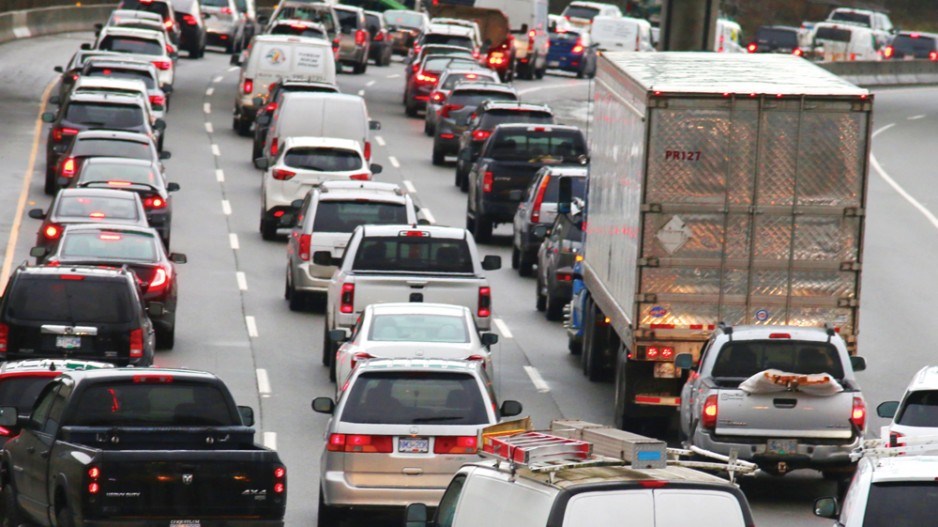In 2021, the driving prowess of an entire country appeared to be turning the corner safely and confidently.
Three years earlier, half of Canadians (50 per cent) told Research Co. and Glacier Media that drivers in their municipality had become worse. The proportion of residents who voiced dissatisfaction with the performance of motorists dropped slightly to 47 per cent in 2019, then more radically to 39 per cent in 2020 and to 30 per cent in 2021.
In August 2022, as we returned to our pre-pandemic lives, the results were not terrific, with 48 per cent of Canadians telling us that the drivers around them were now worse. The positive momentum was gone.
When we asked again earlier this month, the needle did not move much. For 46 per cent of Canadians (down two points), drivers are worse than they were five years ago. This leaves 40 per cent (up one point) who think their city or town’s motorists are the same as before and only eight per cent (unchanged) who believe they are better.
The results suggest that the surge in the proportion of Canadians who expressed respect for drivers in their municipality was a welcome side-effect of COVID-19. We were not out as much, as outlined by the increase in undecided respondents in 2020 and 2021, and may have assumed that people were cautious and caring. The past two years have not been quite the same.
We continue to see a severe generational gap. Most Canadians aged 55 and over (56 per cent) think drivers in their municipality are worse than before, compared to 43 per cent among their counterparts aged 35 to 54 and 37 per cent among those aged 18 to 34.
In what amounts to be a bit of a silver lining, our tracker of bad habits on the road sees reductions on five items. We still see most Canadians (59 per cent) saying they witnessed a driver not signaling before a turn, but this indicator is down 10 points since 2022. In addition, half of us (50 per cent, down four points) saw a car taking up two or more spots in a parking lot.
Compared to 2022, fewer Canadians also recall a driver not stopping at an intersection (45 per cent, down four points), saw a car turning right or left from an incorrect lane (also known as “lane tracking”) (35 per cent, down five points) or say they experienced a close call, such as slamming the brakes, or having to steer violently to avoid a collision (34 per cent, down three points).
The one area where we see an unexpected increase is car crashes. Almost one in 10 Canadians (nine per cent) experienced one in a vehicle they were driving or were passengers in, up four points since 2022 and highest in Ontario (13 per cent).
British Columbia was usually at or near the top when it came to driving blunders, but neighbouring Alberta commands the charts in 2023. This province is significantly ahead of the national average on drivers who choose not to signal before turning (66 per cent), parked cars taking up more spots than one (59 per cent) and drivers not stopping at intersections (49 per cent, barely edging Quebec at 48 per cent). Atlantic Canada leads the way on close calls, at 45 per cent.
About three in five Canadians (59 per cent, up one point) believe specific groups or people in their city or town are worse drivers than others. Albertans, who we have already established are noticing improper behaviour at a higher rate than other Canadians, are also ahead of the national average on looking at specific groups or people as problematic (71 per cent).
The open-ended question continues to serve primarily to measure generational despair. The top two spots are reserved for the words “young” (33 per cent, down seven points) and “elderly” (21 points, up three points).
Only two other words are used by more than one in 10 respondents to blame someone for the decline of driving in their community: “Asian” (16 per cent, down three points) and “immigrant” (12 per cent, up four points). As was the case last year, gender is not the primary characteristic Canadians remember when encountering a bad driver, and few of us gravitate towards words that actually focus on preparedness and not age or ethnicity, such as “impaired” or “distracted.”
It is difficult to figure out where we will go from here, but the results can seem disheartening. The pandemic provided some optimism, as Canadians began to have a better opinion of motorists. Unfortunately, for the second year in a row, practically half of us do not feel reassured when assessing the drivers around us.
Mario Canseco is president of Research Co.
Results are based on an online study conducted from Sept. 2-4, 2023, among 1,000 adults in Canada. The data has been statistically weighted according to Canadian census figures for age, gender and region. The margin of error – which measures sample variability – is plus or minus 3.1 percentage points, 19 times out of 20.




